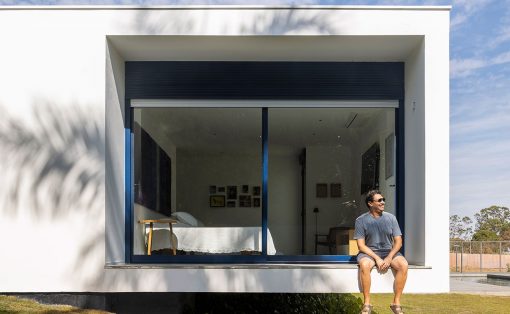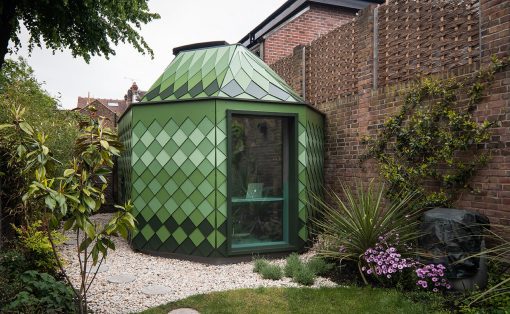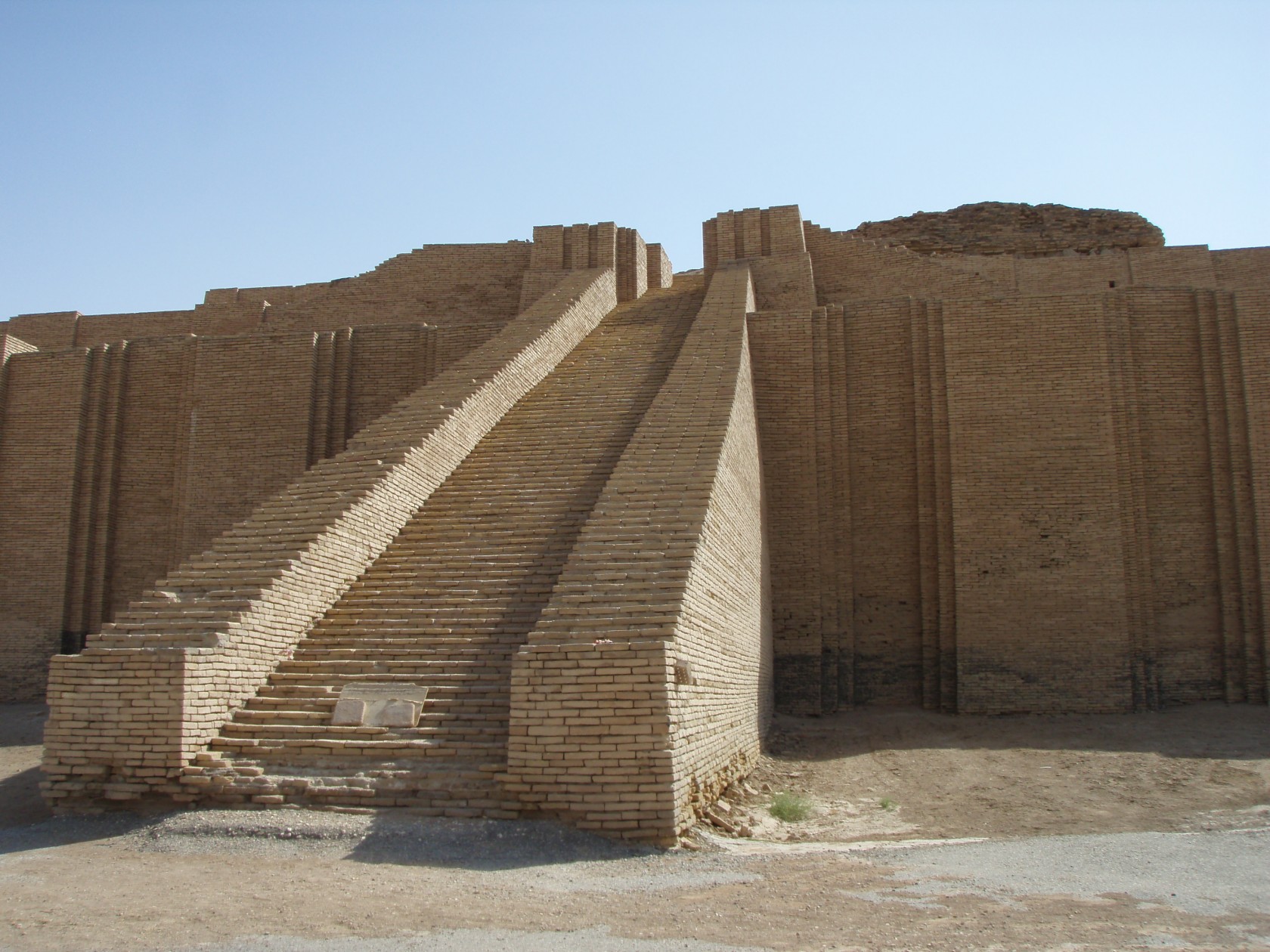
Mesopotamian architecture, born in the region between the Tigris and Euphrates rivers, takes its name from the Greek phrase “the land between the rivers. The Mesopotamian civilization is also known as the “Cradle of Civilization,” which covers the territories in Iran, Iraq, Kuwait, Lebanon, Israel, Palestine, Syria, Jordan, and Cyprus. The art and architectural creations from ancient Mesopotamia, trace their origins over 7,000 years ago. These works initially emerged in northern Mesopotamia before the Ubaid Period (circa 5500-4000 BCE) and further evolved in the south during the Uruk Period (4000-3000 BCE) in Sumer which marked the establishment of the earliest recorded civilization. During this period, the focus in architecture was predominantly on religious structures, with all sculptures having deep religious significance.
Image courtesy of: Kaufingdude
Some of Mesopotamia’s architectural achievements include advanced urban planning, the design of the courtyard house, and the construction of ziggurats to name a few.
Urban Planning
• Mesopotamian cities followed a grid-like layout with straight-aligned streets and structures where the city was organized into square or rectangular blocks that are akin to contemporary urban planning. The cities featured intersecting main streets that ran both longitudinally and latitudinally and were lined with a variety of establishments, including shops, residences, and public buildings. Additionally, distinct sectors were strategically planned for housing, religious activities, and various administrative functions.
• The city was divided into residential, mixed-use, commercial, and civic zones that were grouped according to the profession of the people and were distinctly allocated based on social strata. The more affluent residents occupied the inner city, and those of lower socio-economic status resided in the outskirts.
• The Mesopotamian urban centers included robust walls constructed from mud-brick or stone to safeguard the territory against intrusion and security of the residents. These fortified walls were characterized by substantial thickness durability and protection from external dangers.
Ishtar Gate of Babylon
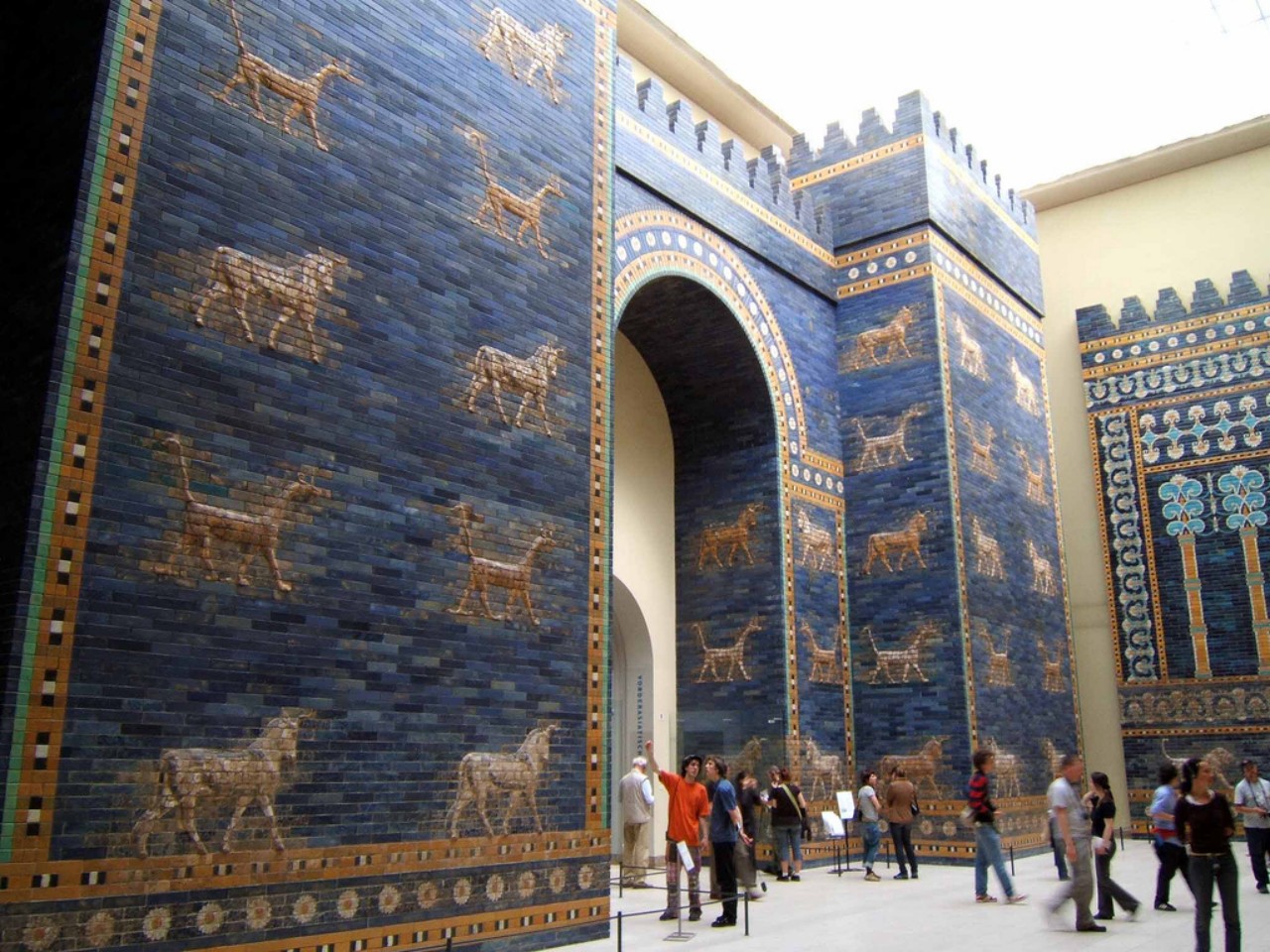
Image courtesy of: Rick Norton
The Ishtar Gate was a significant entrance around the inner city of Babylon, the capital of ancient Babylonia. This gate epitomized the city’s opulence and power. Adorned with intricate sculptures featuring lions, bulls, and dragons, it served as a symbol of the Babylonian ruler’s authority. The sculptures on the gate were crafted from vibrant glazed brick, enhancing the structure’s striking appearance.
• Another important aspect of the Mesopotamian civilization was the construction of the central high temple complex that served as the core around which the city evolved and the urban layout developed.
• Mesopotamian urban centers featured numerous public edifices, including grand palaces, administrative hubs, and assembly halls. Additionally, public plazas and market places served as focal points for trade and social gatherings.
Ziggurats
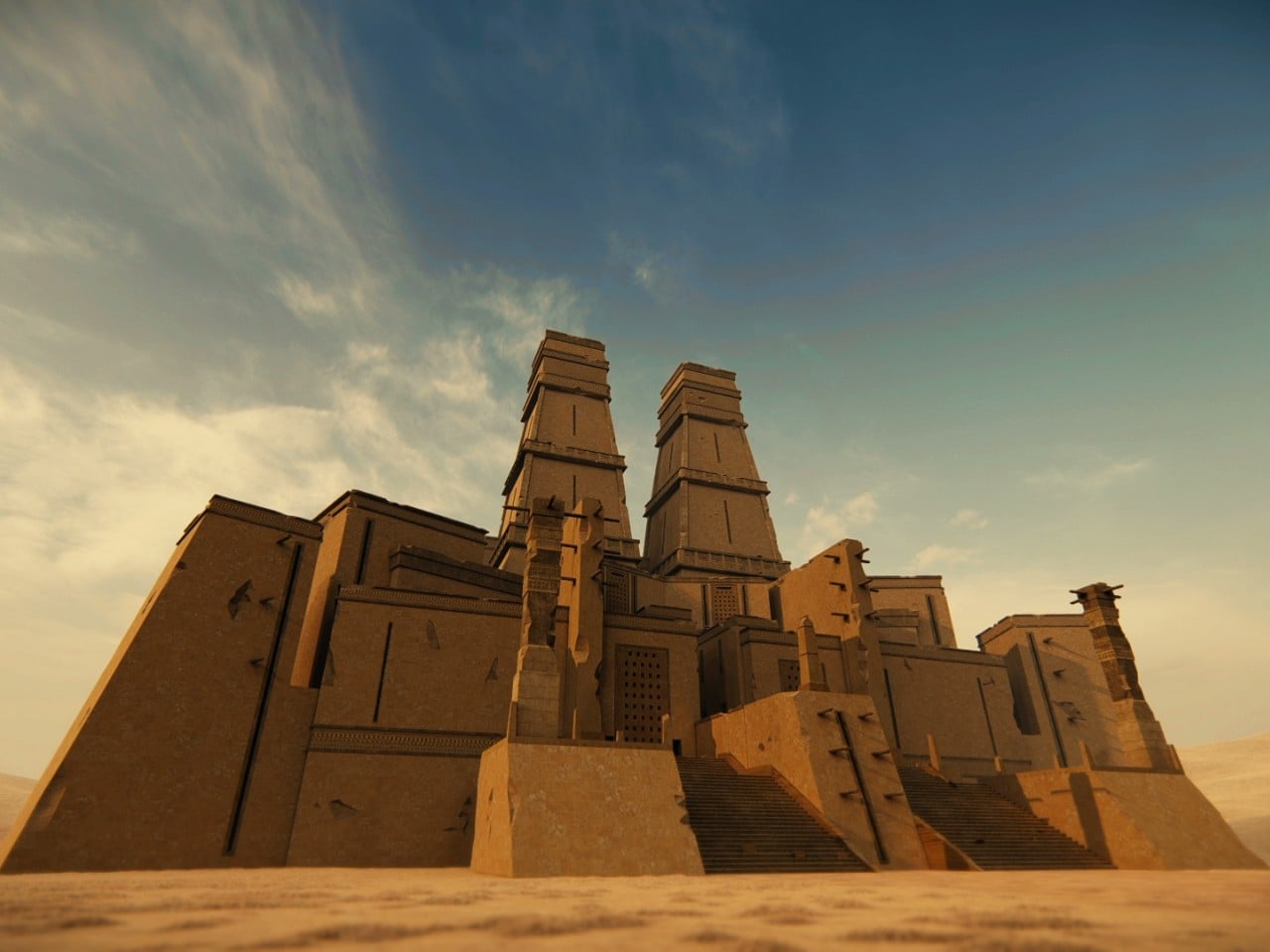
Image courtesy of: Handrox-G
• The Ziggurats formed one of Mesopotamia’s most renowned architectural elements which stood out as a colossal, tiered temple tower, resembling a stepped pyramid.
• These structures held religious significance and were built from sun-dried bricks that were often decorated with vibrant glazed bricks and the temples were dedicated to various gods and goddesses.
• These monumental structures were often located at the center of the cities where they acted as focal points and symbolized the city’s connection with the divine.
Some of the famous Ziggurats include:
Ziggurat of Dur-Kurigalzu
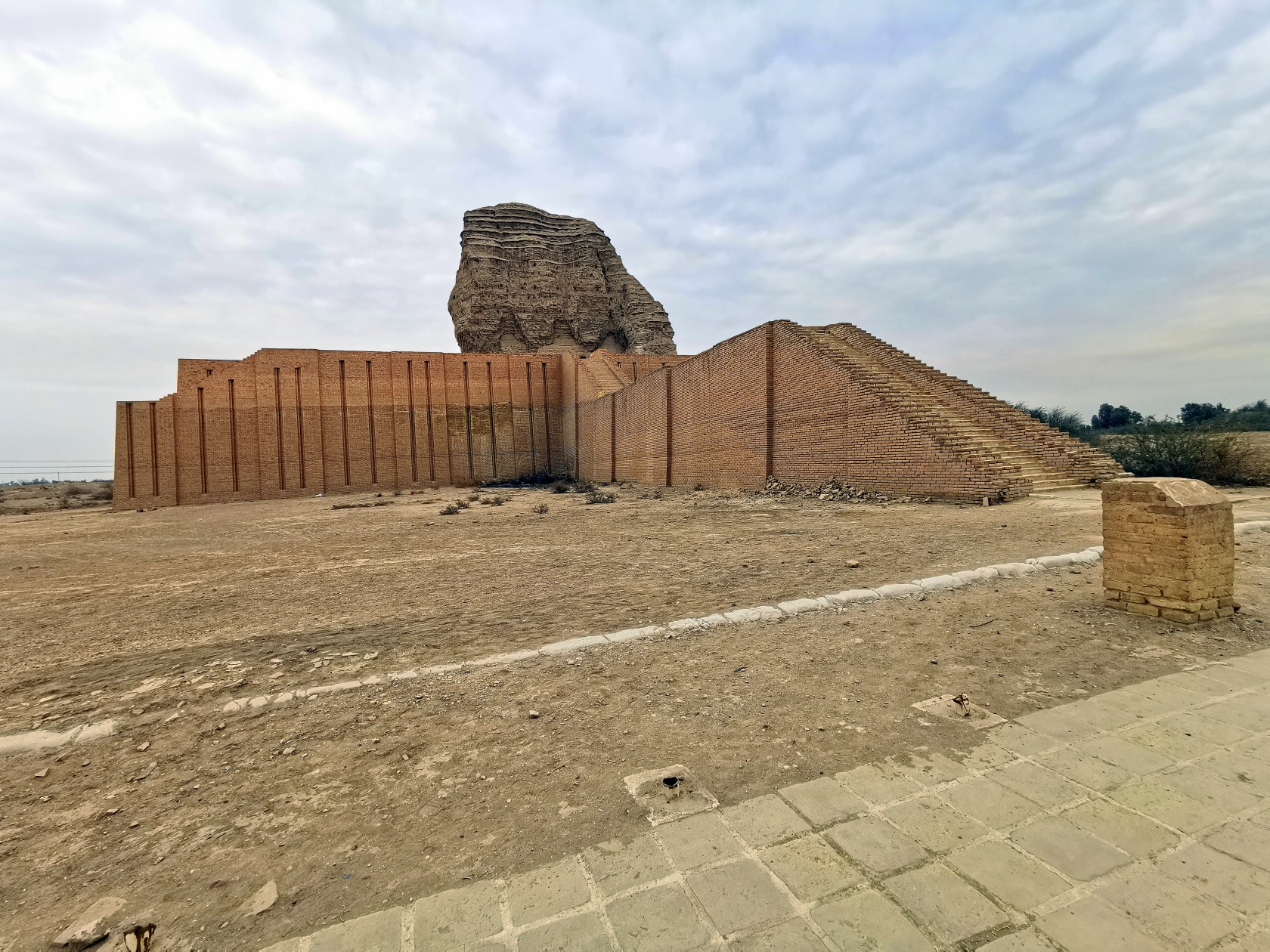
Image courtesy of: Dr. Osama Shukir Muhammed Amin
Dur-Kurigalzu is an ancient city that is situated approximately 30 kilometers west of modern-day Baghdad and was established by the Kassite king of Babylon, Kurigalzu I, during the early 14th century B.C. This ziggurat is 52 meters tall and stands out prominently in the flat terrain near the convergence of the Tigris and Euphrates Rivers. It was surrounded by multiple temples and an extensive palace complex covering an area of 420,000 square meters.
Chogha Zanbil
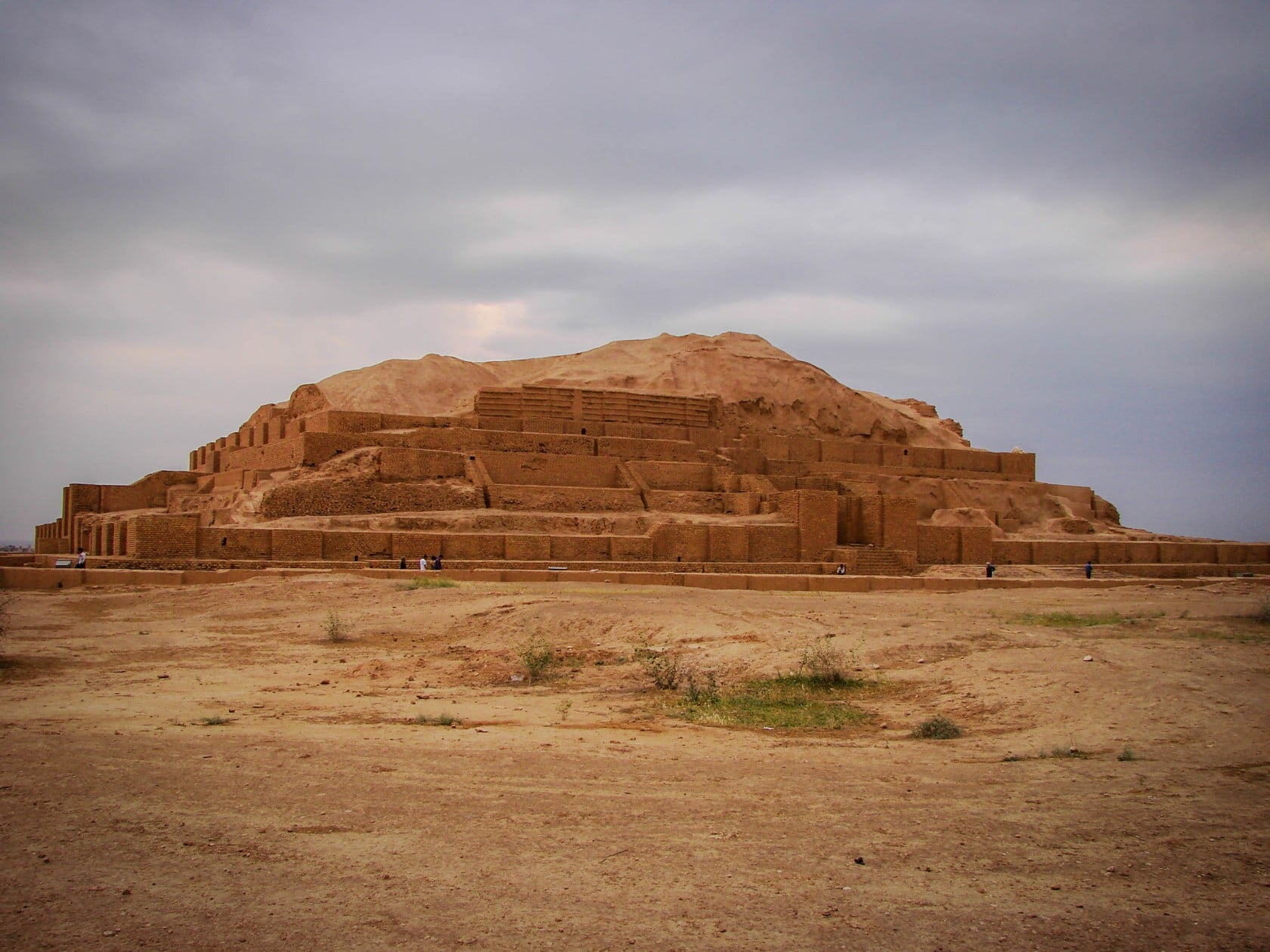
Image courtesy of: Mehdi Zali.K
Chogha Zanbil is the name of a complex housing a massive ziggurat and is known as one of the world’s best-preserved ziggurats, located in the Khuzestan Province in western Iran. The square ziggurat measured 105.2 meters in base length and 53 meters in height, distributed across 5 floors. This ziggurat was constructed in the 13th century B.C. and it earned UNESCO World Heritage status in 1979.
Great Ziggurat of Ur
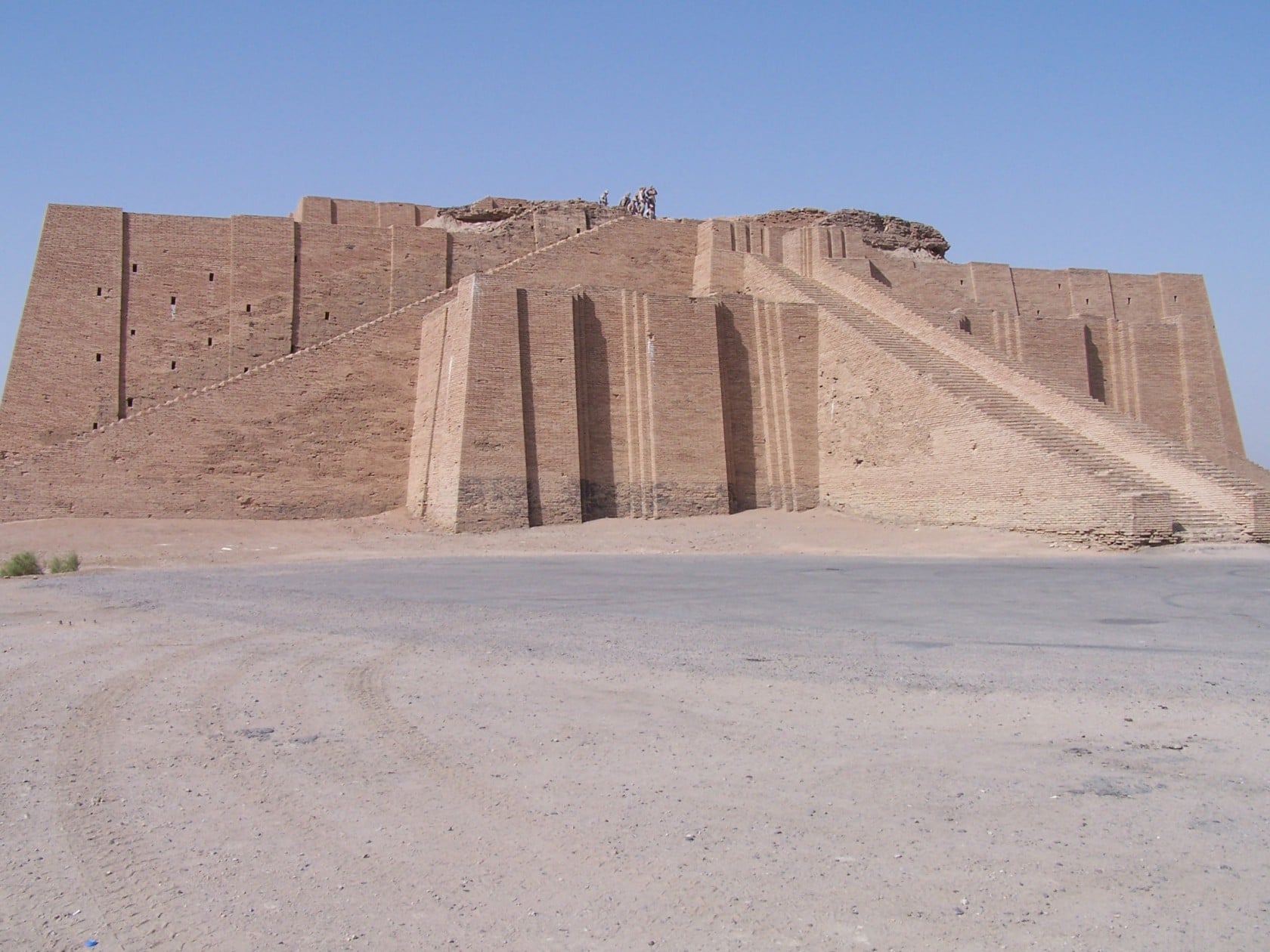
Image courtesy of: Hardnfast
The Great Ziggurat of Ur, originally named “Etemenniguru,” meaning “Temple whose foundation creates an aura,” was initially constructed in the 21st century B.C. However, by the 6th century B.C., it had fallen into disrepair and was subsequently restored by the Neo-Babylonian King Nabonidus. For many centuries, the ziggurat was forgotten until its rediscovery in the 1920s. This ziggurat in the southeast of Iraq underwent partial restoration, which included the grand staircase leading to the upper levels.
Mesopotamian Houses
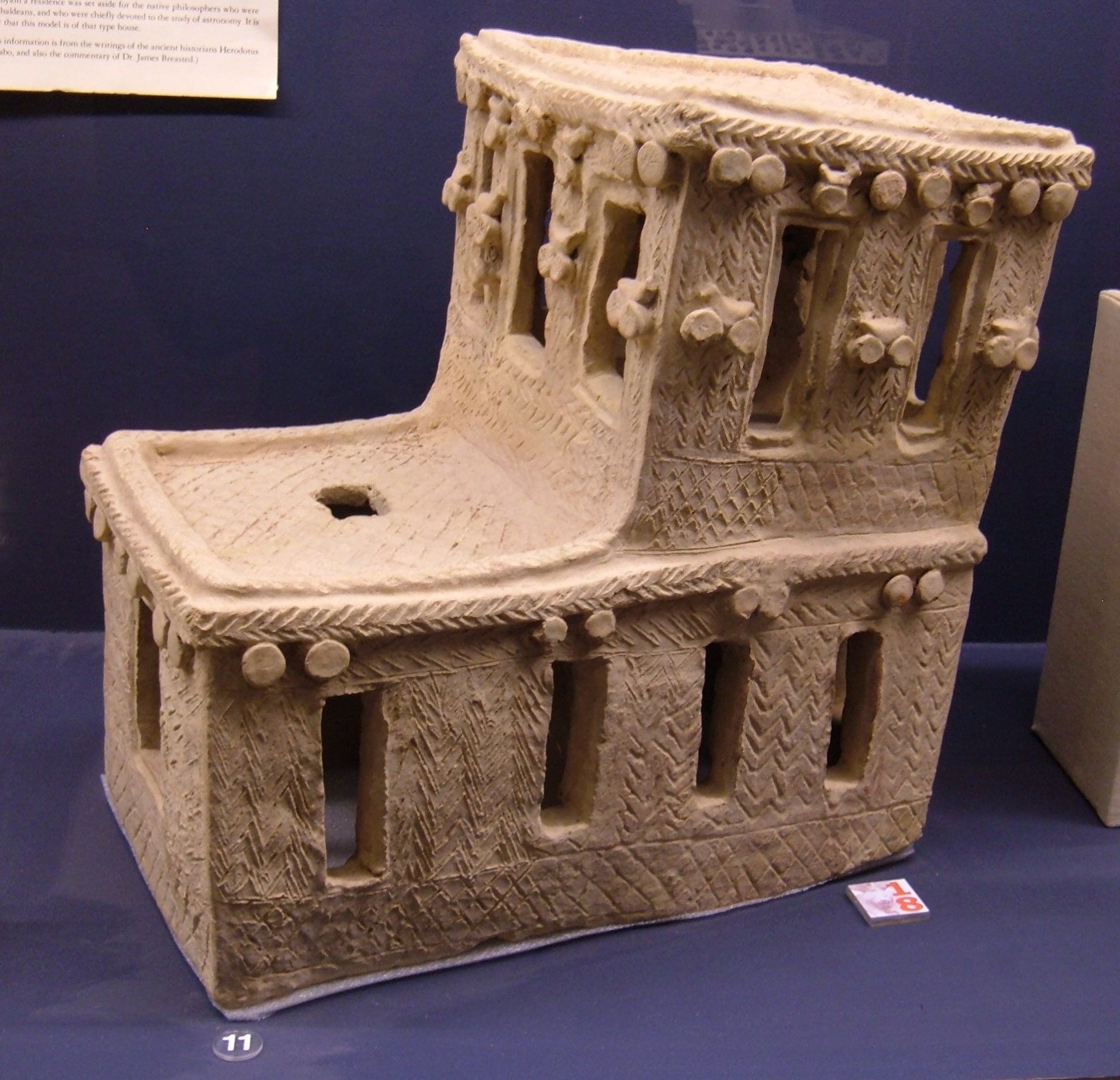
Image courtesy of: BrokenSphere
Sumerian houses featured long-roofed central hallways, courtyards, and multiple storeys, exhibiting significant variations in size and construction materials, indicating that inhabitants likely constructed them themselves. These houses were oriented inward, focusing on an open cooling courtyard serving as the central hub for the home, with all rooms opening into it. The external walls remained plain, offering a single-entry point to the street.
Palaces
• The opulent palaces in Mesopotamia functioned as the centers of authority for rulers and administrators. The palace complex included impressive courtyards, audience chambers, and private accommodations.
• These versatile structures not only served as royal residences but also as administrative hubs, storage facilities, and sometimes workshops for artisans. Typically, these functions were compartmentalized, with various rooms grouped around an open central courtyard.
What are the Key Features of Mesopotamian Art and Architecture?
• Mesopotamian builders harnessed the local resources of clay and reeds to implement mudbrick construction for creating robust structures such as city walls, fortifications, and residences. Mud bricks were a staple of Mesopotamian construction due to their abundant local availability. These bricks were manually formed using a mixture of clay and straw, sun-dried, and subsequently utilized in architecture.
• Mesopotamian buildings include brick construction, columns, arches, and ornate decorations. The architects in Mesopotamia employed a modular design approach, enabling easy construction.
• The Mesopotamian architectural style, influenced by the region’s hot, arid climate, incorporated thick walls and high ceilings for sun and heat protection.
• In city planning, canals played a vital role by enabling agricultural irrigation, facilitating transportation, and supporting trade. Intricate water management systems were designed by skilled engineers and architects to control water from the Tigris and Euphrates rivers, including canals, embankments, and reservoirs. Note that water management was crucial to the fertile soil of Mesopotamia so that it could support agriculture and urban development.
• In Mesopotamian cities, they implemented sophisticated sanitation systems for their era, characterized by efficiently designed drainage and sewage systems, utilizing canals and conduits to divert wastewater from residential zones, effectively mitigating the risk of disease transmission.
• Mesopotamians used cuneiform script to inscribe stone tablets, reliefs, and statues for commemorating achievements, recording legal codes, and conveying religious narratives. This provides invaluable insights into the historical and cultural heritage of the Mesopotamian civilization.
• Mesopotamian architecture was adorned with carvings, reliefs, and sculptures, which not only enhanced the aesthetics but also conveyed social, political, and religious themes, often drawing from mythology, nature, and everyday life.
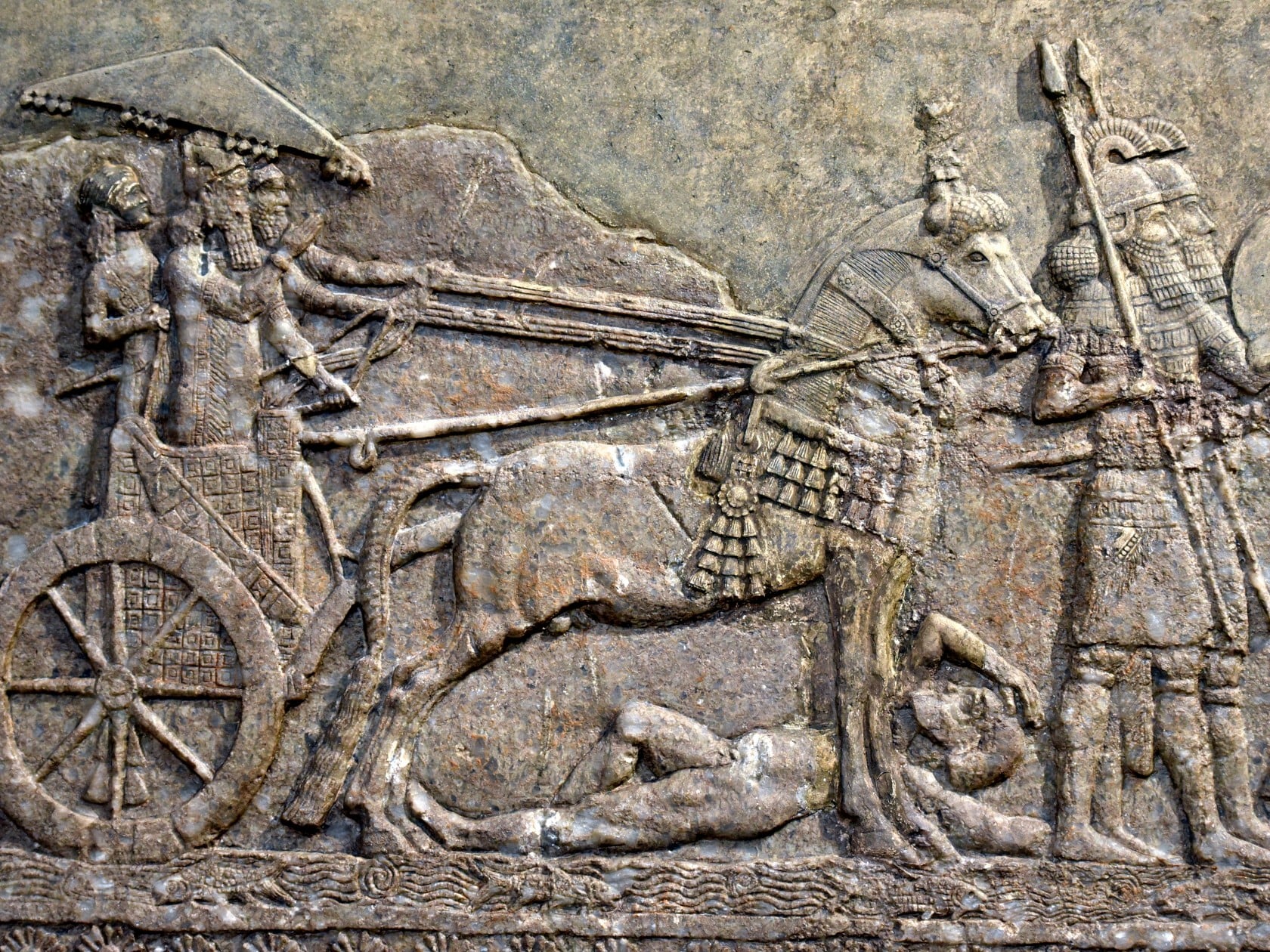
Image courtesy of: Sanjar Alimov
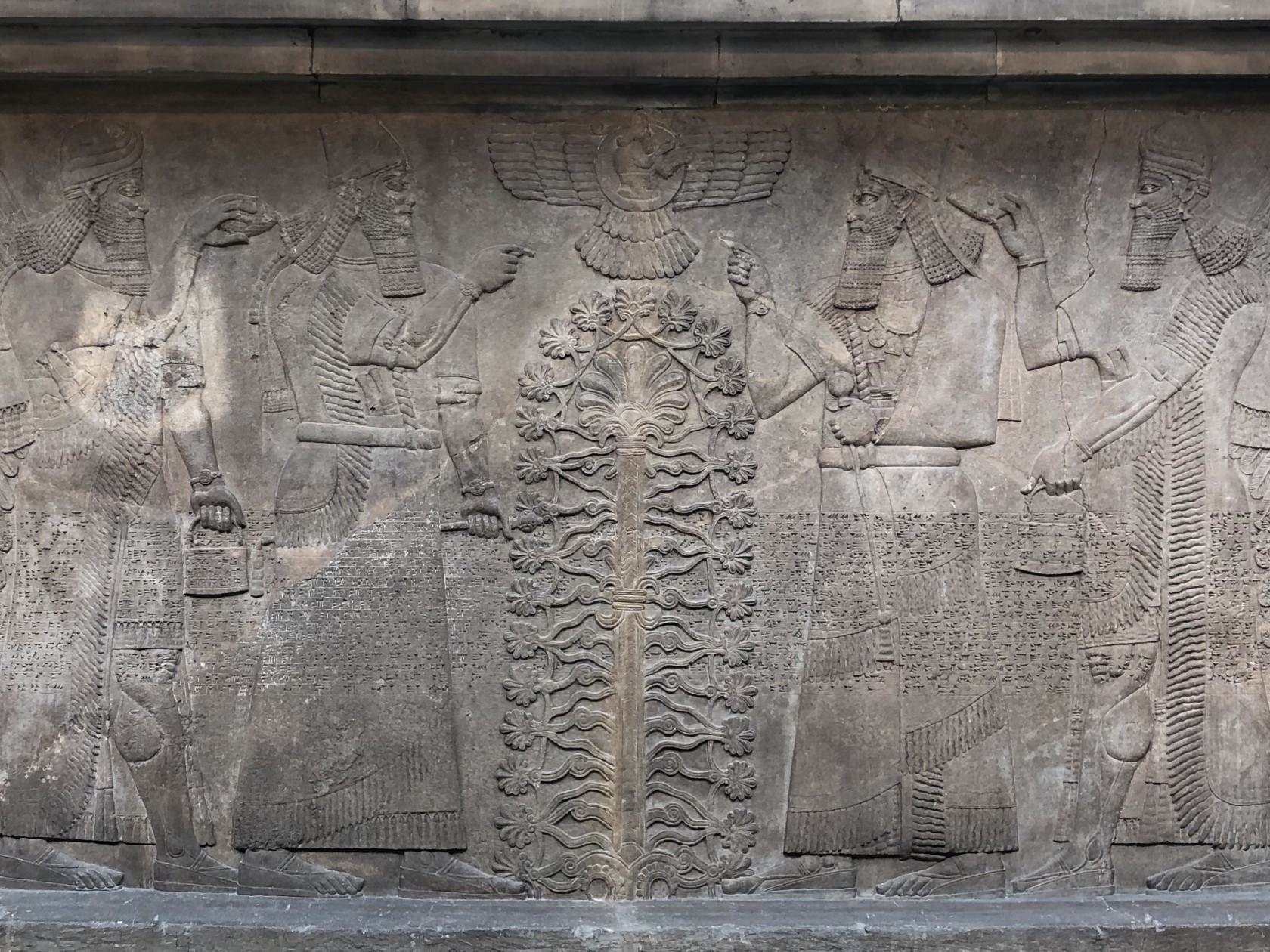
Image courtesy of: Osama Shukir Muhammed Amin
To conclude, the Mesopotamian urban design was efficient and featured grid-like arrangements, defensive fortifications, ziggurats, irrigation canals, well-planned residential zones, public structures, and sanitation systems. These design elements played a key role in fostering the growth of vibrant urban hubs that served as the foundation of the Mesopotamian civilization.



